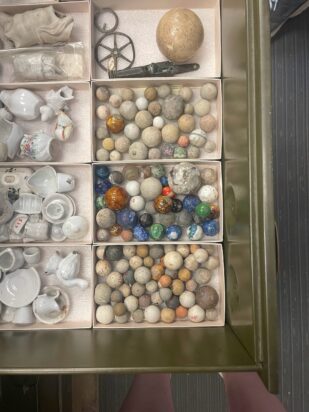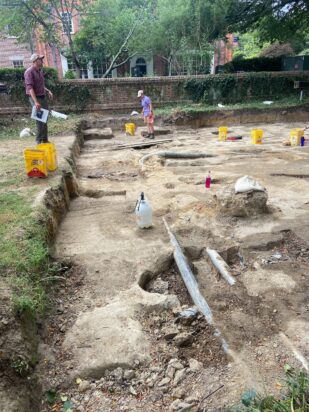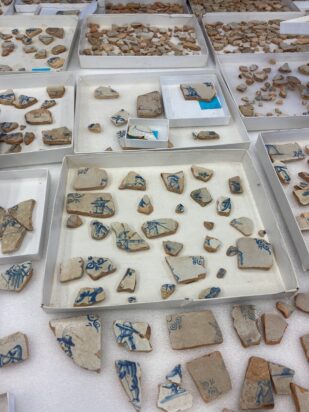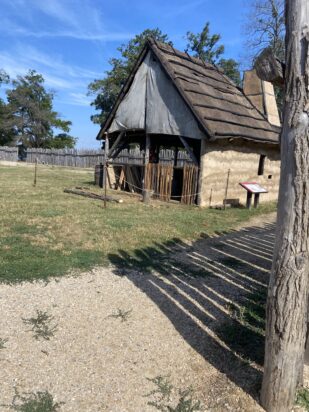Archaeology Blog
2024 Field School Week 4 (Part Two)
By: Grayson Ross and Izzy Coupe
At the end of the fourth week of classes, students went to Williamsburg and Jamestown to learn about other sites in Virginia. We began our trip in Williamsburg on Thursday with a tour of the Colonial Williamsburg’s current and recent archaeological sites, along with visiting units from William and Mary’s field school. Students saw similarities and differences between their units and ones in Williamsburg, with the most notable difference being the soil composition. During the tour, we were told about the work that is being done at the First Baptist Church site, including studying the history of African Americans in Williamsburg. This site was a location of worship for one of the first African American congregations in the United States. While excavating a few years ago, they uncovered evidence of burials that are associated with the early church, and how archaeologists are working with the descendant communities to see how they would like the archaeologists to proceed. Later in the day, students were given a tour of the archaeology lab at Williamsburg.
The Lab tour gave the students insight to how Colonial Williamsburg cleans, catalogues, and studies artifacts. Students were allowed to explore the lab and see a variety of artifacts, including multiple types of ceramics, marbles, bottles, and tools.
On Friday, students moved onto Historic Jamestowne. We were given a tour of the site by Sean Romo and Mary Anna Hartley, Jamestown’s Senior Staff Archaeologists. During the tour, they explained how they look for evidence of the fort and how it was interpreted to create the reconstruction that is there now. The staff archaeologists provided students with more information how bioarcheology can help archaeologists learn about the lives of the remains they find. He discussed the importance that Jamestown Rediscovery places on respecting any deceased colonists they find while excavating units and paying homage to them in their museum. Students saw a special exhibit dedicated to the deceased colonists found at Jamestown that provided more information on what life was like for the settlers. Other parts of the museum were fully dedicated to Indigenous people, like Pocahontas for example, and explained the importance they had in Jamestown’s development. Some students also found it interesting how some of the artifacts in the museum were similar to ones we saw at Colonial Williamsburg and Poplar Forest.
Students then went on a tour of Jamestown Rediscovery’s lab. They looked at the methods used to study artifacts and ensure they are properly taken care of such as a portable X-ray, and an Air Abrader that can use different types of media such as crushed walnut shell and crushed glass. Archaeologists also explained their cataloging methods and allowed students to see their large collection of ceramics. We finished up our tour of Williamsburg and Jamestown leaving with more information on how to execute units and do specialized kinds of lab work.



